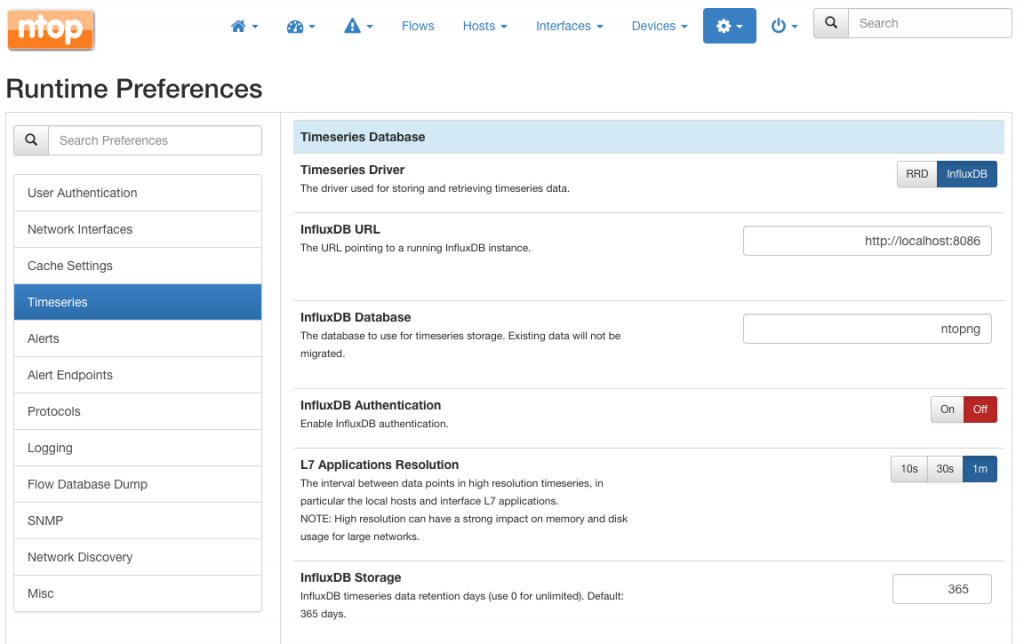

- #NTOPNG GENERATED CENTREON HOW TO#
- #NTOPNG GENERATED CENTREON INSTALL#
- #NTOPNG GENERATED CENTREON CODE#
- #NTOPNG GENERATED CENTREON PASSWORD#
Support for sFlow, NetFlow and IPFIX through nProbe.Protocol-level real-time analysis of local network traffic.
#NTOPNG GENERATED CENTREON HOW TO#
In this tutorial, I will explain how to set up a web-based network traffic monitoring system on CentOS 7 using ntopng.
#NTOPNG GENERATED CENTREON INSTALL#
You can install ntopng on any monitoring server connected to your network and use a web browser to access real-time traffic reports available on the server. Ntopng provides several tools for monitoring various protocols, traffic variants and bandwidth across multiple time frames. It very useful tool that helps you learn more about your network traffic. These passwords are very difficult to remember.Ntopng is an opensource network traffic monitoring system that provides a web interface for real-time network monitoring. You should make sure that you have it stored somewhere, either on your computer or in the cloud.
#NTOPNG GENERATED CENTREON PASSWORD#
You just need to generate a password and copy it to the site. The majority of services are very simple and easy to use. By the way, do not be intimidated by these handy tools. I also don’t share my passwords with anyone - this tip was also mentioned in the post. You can create different options for different websites to avoid using the same pass on all your online resources.

This is when password managers are most useful. As for me, I try to use strong passwords that include lots of symbols and letters. This article will definitely help you keep your online passwords secure. How to keep your passwords safe? In this post, I discovered that it is very easy! To avoid losing personal data, just follow the steps described above. Is there any useful info on how to create and use your online passwords in a safe way? Sure! I found a lot of tips and tricks on where to store my information and protect my personal data. How to keep your online passwords secure? :~# service nagios restartĪccess the browser and click hosts to view the status of the hosts that is appended to the Nagios Things look okay - No serious problems were detected during the pre-flight check Running pre-flight check on configuration data.Ĭhecking obsessive compulsive processor commands. # Ubuntu Host configuration fileĬheck_command check_ping!100.0,20%!500.0,60%Ĭheck_command check_local_procs!250!400!RSZDTĪfter adding the entry, test Nagios configuration :~# /usr/local/nagios/bin/nagios -v /usr/local/nagios/etc/nagios.cfgĬopyright (c) 2009-present Nagios Core Development Team and Community Contributors :~# vim /usr/local/nagios/etc/servers/host.cfgĪdd the following entry in to the newly created file. Make sure that the above change is applied on the host machine.Īfter configuring the host, login to Nagios Server and do the following steps.Ĭreate new configuration file for host that is to be added into Nagios. Then restart NRPE services to make the changes active.
#NTOPNG GENERATED CENTREON CODE#
var/cache/apt/archives/mysql-common_5.6.31-0ubuntu0.15.10.1_all.debĮ: Sub-process /usr/bin/dpkg returned an error code (1)Īfter installing the dependencies, Open and add the Nagios server IP address into the configuration file. Įrrors were encountered while processing: Processing triggers for systemd (225-1ubuntu9). Processing triggers for ureadahead (0.100.0-19). Processing triggers for man-db (2.7.4-1). Unpacking nagios-plugins-common (1.5-3ubuntu1). Selecting previously unselected package nagios-plugins-common. Nagios-plugins-standard python-ldb python-samba rpcbind samba-common samba-common-bin samba-libs smbclient snmp whois Libdbi1 libldb1 libmysqlclient18 libnet-snmp-perl libpq5 libsmbclient libtirpc1 libwbclient0 mysql-common nagios-plugins-basic nagios-plugins-common The following extra packages will be installed: Use ' apt-get autoremove' to remove them. The following packages were automatically installed and are no longer required: :~# apt-get install nagios-nrpe-server nagios-plugins -y

Utilize the below command to install the NRPE Service and nagios plugins on Host machine. To install NRPE Services and Nasgios Plugins


 0 kommentar(er)
0 kommentar(er)
